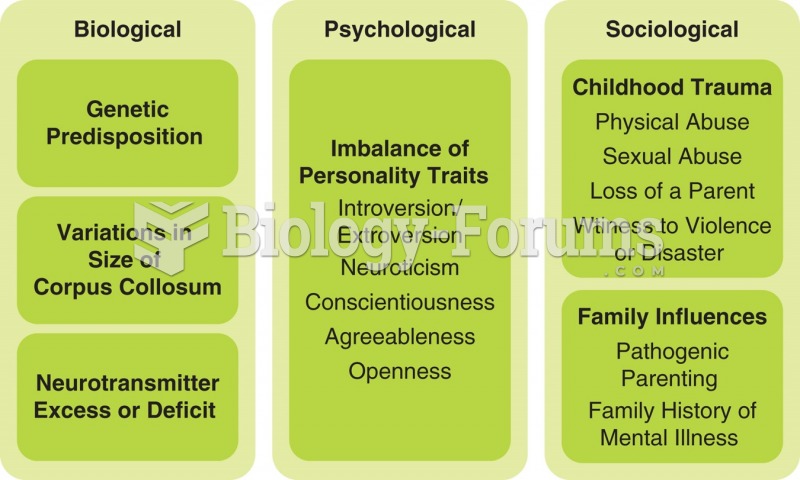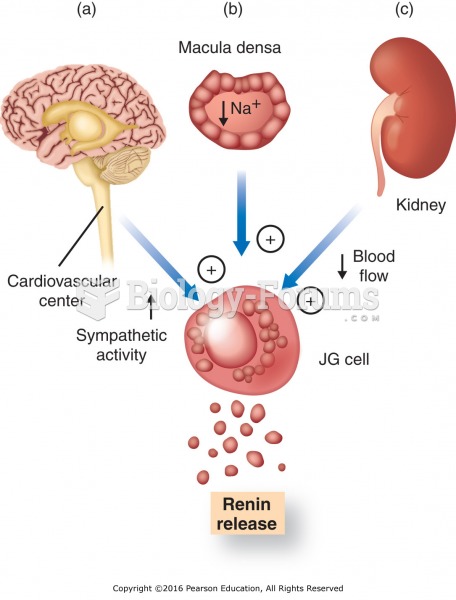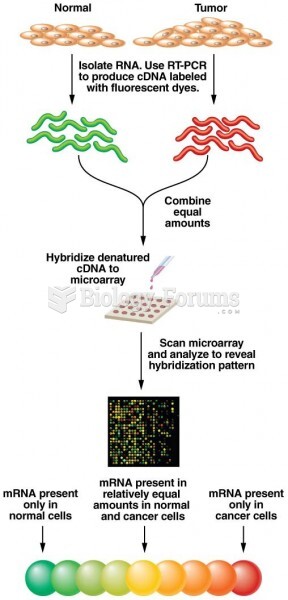This topic contains a solution. Click here to go to the answer
|
|
|
Did you know?
Hippocrates noted that blood separates into four differently colored liquids when removed from the body and examined: a pure red liquid mixed with white liquid material with a yellow-colored froth at the top and a black substance that settles underneath; he named these the four humors (for blood, phlegm, yellow bile, and black bile).
Did you know?
About 100 new prescription or over-the-counter drugs come into the U.S. market every year.
Did you know?
HIV testing reach is still limited. An estimated 40% of people with HIV (more than 14 million) remain undiagnosed and do not know their infection status.
Did you know?
Everyone has one nostril that is larger than the other.
Did you know?
The ratio of hydrogen atoms to oxygen in water (H2O) is 2:1.







